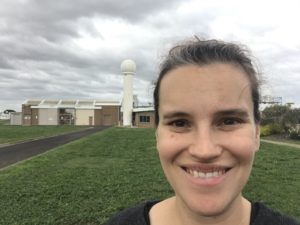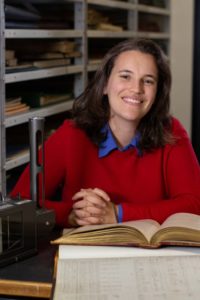
Dr Linden Ashcroft
Lecturer in Climate Science and Science Communication, The University of Melbourne
Field of expertise: Australian climate history, climate change, citizen science
In the time you have been working in your field, what impossible things have become possible?
I work in the field of historical climatology. This is a wonderful mixture of stories and science, using old documents and weather records to piece together our weather and climate before ‘official’ records began. Research like this has been done for years in the Northern Hemisphere, but when I started in the field it seemed impossible that we could uncover much in the southern latitudes.
Fast forward 10 years, and there are projects happening all across the Southern Hemisphere on historical weather information! In Australia we can now look at heatwaves, cold outbreaks, downpours and droughts back to the early 1800s, and sometimes as early as European colonisation.
Making this impossibility possible means we now know more about our own climate and how it is changing. It also means Australia and the south is better represented in international climate research, which improves global studies of human-induced climate change.
What impossible thing(s) are you working towards making possible, and why?
All across the country in libraries and attics there are diaries, books, ledgers and logbooks full of priceless weather information that have been collected by dedicated men and women. These data have never been scientifically analysed, so are not contributing to our national understanding of Australia’s weather and climate. I am working on finding and recovering these valuable records.
It is a huge task, but we must make it possible because the efforts of amateur weather observers deserve to be honoured. I also believe connecting people to the climate of their past is a powerful way of communicating what we stand to lose in the future.
What is an example of an impossible thing others in your field are currently  working to make possible?
working to make possible?
I am in constant awe of colleagues in my field working on the truly impossible: predicting the future. There is a lot we understand about human-induced climate change, but there are still many aspects we still don’t know. How might our droughts change in 50 years? What about our thunderstorms? How will we cope as a society? And how are humans going to behave? This is the biggest source of uncertainty when we try to predict the future of our planet.
More and more industries and communities want the answers to these questions, and my colleagues work tirelessly to provide the best information they can to help us prepare for a warmer world.
In your field are there any things that you predict will remain impossible, and why?
One aspect of my field I would really like to see become possible is more inclusion of Indigenous science. Indigenous understanding of weather and climate has often been overlooked in climate studies, because it is harder to draw into graphs or connect to specific periods of time.
But there is so much to learn about our country’s climate from First Nations People. Other scientific fields like geology, biology and astronomy are involving more Indigenous knowledge in research and I look forward to this occurring in climate science as well.
In your opinion what formerly impossible and now possible thing in your field has made or is making the largest contribution to human or planetary flourishing?
It used to be nearly impossible for scientists to share their stories and passion with the public. I think this is particularly true for climate scientists, because we felt that showing our personalities would make us seem less objective or trustworthy. This meant that the scientific message was delivered by other people, rather than the experts themselves.
But now I feel like it is possible—even preferable—for scientists to communicate their science AND their personalities. People connect with stories after all, not statistics. We want to hear about heroes and villains, about quests to solve impossible problems, and science is full of these adventures.
Scientists are now are being equipped with communication skills much earlier in their career, making it more possible than ever before for climate scientists to tell their stories.
Stories might not seem like much, but they are how people make sense of the world. And if more scientific stories get told, then more science can be used by everyone to ensure the planet remains habitable.
More information:
Find out more about the research of Dr Ashcroft and her colleagues at Climate History Australia
